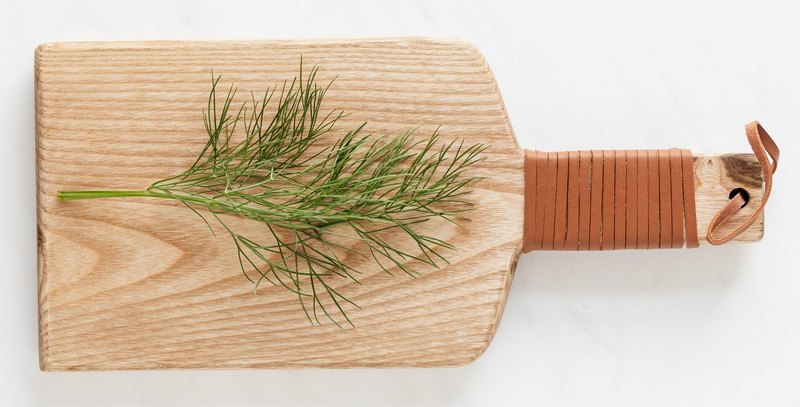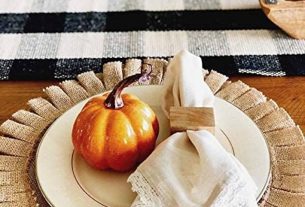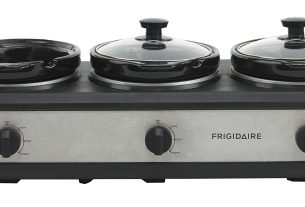People often confuse fennel and dill for each other because they both have delicate, light feathery leaves when you look at them. Both of them are usually featured in the Mediterranean cuisines, however, they are both different types of plants. We want to find out the differences between dill and fennel.
While Dill is considered a type of aromatic herb used in flavoring some other foods such as dill pickles, fennel is considered a type of perennial edible plant, and both the seeds and leaves are edible. The bulbs and stalks are slightly sweet and crunchy with a type of flavor not of anise. In this guide, we will check out all the differences between dill and fennel.
What is Dill?
Dill is a native of Russia and it is also from some parts of the Mediterranean and Africa. Dill is easily grown and is now common across the globe. It is featured heavily in Greek, German, and Scandinavian cuisines. It is an herb with both its seeds and leaves helping in flavoring foods.
You will be already familiar with how dill taste if you have taken dill pickles before. The taste uniquely combines slightly bitter and citrusy sweet. Dill is highly aromatic with the smell enhancing the flavor. Dills can be added to salads as well as salad dressings made at home.
Dill Leaves Recipes
Dill pickles are the best iconic role for dill. Dill and cucumber both combine amazingly together, not only for pickles but in the Greek sauce or dip Tzatziki and salads. Many dishes can be elevated to another level when you add dill if you want to add it to items beyond cucumbers. Check below for some of the ideas you should consider:
- Breaded or grilled fish with a spritz of lemon and rubbing of dill into the fish
- Potato salad
- Cooked with grains like rice or quinoa
- Fresh salads, particularly with a sprinkle of feta or a drizzle of lemon.
- Dill dip and creamy spinach
- Root vegetables and roasted potatoes with rosemary and dill
- Dill chicken and lemon either in cream sauces or sautéed.
Dill offers deliciousness in any kind of setting. Add dill to spice up your old family recipe.
What is Fennel?
This is a native of the Mediterranean areas. It is regarded as a type of perennial plant and it is now grown in almost every area across the globe. Fennel belongs to the family of the carrot. The bulbs and stalks are slightly sweet and crunchy when eaten raw with flavors of black licorice or anise.
Everything contained in the plant can be eaten including the seeds and leaves that have a more pronounced flavor. Generally, the wild variety of fennel is regarded as an invasive plant mainly because it usually grows wild.
Fennel Recipes
Fennel can be prepared in several ways because the whole plant can be used in cooking. The seeds, leafy fronds, stalks, and bulbs can all be used individually and also together. You can sauté the bulb and stalks with any other type of vegetable for the flavor and you can also eat it raw to get an awesome bite for your sandwiches and salads.
The leaves taste and look fantastic when added to salads or blended or garnished into a sauce or dip dressing. Fennel and fish work well together. Check below for some of the ideas you can explore whenever you want to eat fennel:
- Fennel pasta
- Fennel soup
- Fennel with poached or sautéed fish.
- Fennel with salads, most particularly fennel dill salads
- Fennel with coleslaw or fennel slaw
Fennel is a key ingredient in making absinthe which is regarded as a controversial spirit, you might not want to make this yourself.
How to make fennel tea
If you want to enjoy licorice flavors associated with fennel, take fennel tea. It has been researched to help improve digestion and it is great when you take it after dinner. For tea, you will work with fennel seeds. Pour out 1 teaspoon or 2 of entire seeds on your cutting board if you want to enjoy the nutritional benefits. Then, use the flat edge of your chef’s knife to carefully crush the seeds. Your crushed seeds can be added directly to a teapot or your loose-leaf tea strainer.
Use a cup of boiled water for each of the teaspoons having cooled the boiled water for a minimum of 5 minutes. You will then pour the seeds in the water and allow it to steep for about 2 to 3 minutes before you then enjoy it. To sweeten the tea for a wonderful flavor and natural sweetness, add orange juice or honey.

Health Benefits of Dill and Fennel
When you consider the health benefits of plants, nearly all of them have numerous benefits to the health, and dill and fennel are not exceptions. Both of them are flavorful and unique, playing important roles in helping the body to be free from toxic damage and toxins.
Benefits of Dill
Phytonutrients such as monoterpenes and flavonoids that help to protect the body from damaging free radicals are present in high amounts in dill. Interestingly, some certain compounds help to neutralize certain carcinogens such as smoke from a cigarette. We are not encouraging you to begin smoking, however, if you have been exposed to a series of smoke regularly, eating dill the more will help you.
Dill contains a high amount of fiber and calcium and it has a series of minerals and vitamins that are excellent for health. It is generally not used that much in servings. Dill is an antibacterial plant that helps to stop the overgrowth of bacteria, it is excellent for people suffering from candida and other kinds of similar conditions. Dill was traditionally used to relax and soothe and it works well for insomnia and digestive distress.
Fennel Benefits
Every part of a fennel plant is edible and all of the elements individually have uniquely concentrated minerals and vitamins. Fennel contains high constituents of powerful antioxidants referred to as flavonoids and polyphenols which help to repair nearly all damages in the body.
An essential mineral such as molybdenum is found in a high amount in fennel. The major responsibility of molybdenum is to help remove toxins from the body. One serving cup of fennel provides about 10% of the RDI alongside many other minerals and vitamins as well as folate, manganese, and copper.
Cholesterol levels can be improved by combining nutrients. It also helps to protect the heart against diseases and lowers blood pressure. Fennel also has several other benefits attached to it.
Nutritional Comparison: Dill vs Fennel
| Per One Cup of Raw Chopped Item | Dill | Fennel Bulb | ||
| Calories | 3.8 | 27 | ||
| Grams (g) | Daily Value | Grams (g) | Daily Value | |
| Fat | 0.1 | 0.2 | ||
| Carbohydrates | 0.6 | 6.3 | ||
| Fiber | 0.2 | 2.7 | ||
| Protein | 0.3 | 1.1 | ||
| Sugar | 0 | 0 | ||
| Calcium | 2% | 4% | ||
| Iron | 3% | 4% | ||
| Magnesium | 1% | 4% | ||
| Potassium | 2% | 10% | ||
| Vitamin B6 | 1% | 6% | ||
| Vitamin C | 12% | 17% | ||
| Vitamin A | 14% | 2% |
Dill is an herb while the fennel bulb is considered a vegetable. They have different nutrition most especially in their constituent of carbohydrates. Fennel bulb has a low carbohydrate constituent, the seeds and leaves can be more compared to dill that has almost no carbohydrate because it is a very light herb. They are both nutritious and can be greatly added to eating plans, you have no reason not to select both of them for your meal.
Related Questions
Let’s check some regularly asked questions below:
When to harvest dill for pickling?
You are likely to grow dill, especially for pickling. You may also pick the leaves for your daily cooking as well as allowing the dill seeds to become dry. If you want to pickle the vegetables, pick the dill around two weeks after their first flower. It will the dill inside the green seed stage that is perfect when you pickle. When you want to harvest dill for pickling, you need to do it right.
Is growing dill in pots easy?
It is easy to grow dill in pots. Dill loves to have enough space for its roots to be grown long and nicely. Use lengthy pots instead of wide ones. The container should ideally be about 1 to 2 feet tall. Design the pot with any soilless mixture and ensure there are drainage holes. Place your dill in warm sunshine, however, not too extreme. All you have to do for the dill after planting is to occasionally water them. If you wish, the dill can be transplanted to a regular garden after your seedlings have become grown about some inches high. Just like other plants, care for your dill the same way.
Can you eat fennel stalks?
Fennel stalks can be eaten, all parts of fennel including the feathery green fronds and bulb can be eaten. The stalks can be cooked almost in any way you wish to but they are usually excellent with fish and you can use it to flavor soup stalk. The fennel stalks can be juiced for the licorice taste.


